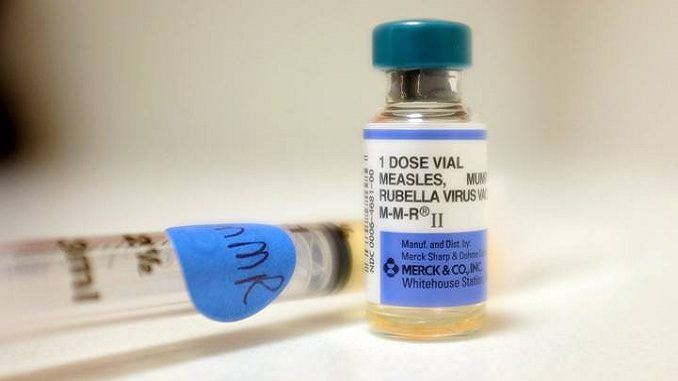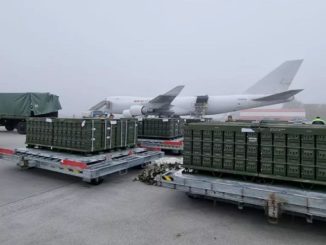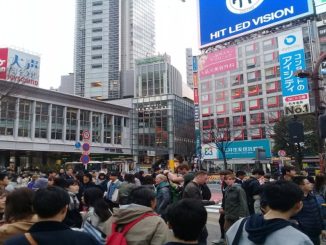
Just over 1 million people in the U.S. have received their first dose of the coronavirus vaccine as of Wednesday morning, a far cry from the federal government’s goal of inoculating 20 million Americans by the end of the year, CNBC reported.
Now that two Covid-19 vaccines have been approved for emergency use, the biggest hurdle to ending the pandemic in the U.S. is getting the doses to the roughly 331 million Americans across the country. The Centers for Disease Control and Prevention said 1,008,025 shots had been administered as of Wednesday at 9 a.m. ET.
That’s roughly 19 million doses shy of earlier projections for December and leaves public officials a little more than a week — about 8 days — to try to close that gap. The U.S. would need to vaccinate more than 2.1 million people per day through Dec. 31 to meet its goal. Two vaccines – from Pfizer and Moderna – have been authorized for use by the Food and Drug Administration, and the U.S. has shipped a total of 9,465,725 doses across the nation, according to CDC data.
The CDC’s data on vaccine distribution comes from state, territorial and local public health agencies as well as five federal agencies. So there may be additional reporting lag for data from those places.
The vaccines are seen by investors and policymakers as a solution to get the U.S. economy back on track as the pandemic wreaks havoc on every state, overwhelms hospitals and upends businesses. The U.S. has the worst outbreak in the world, with more than 18.2 million cases and at least 322,849 deaths, according to data compiled by Johns Hopkins University.
Earlier Wednesday, National Institutes of Health Director Dr. Francis Collins, who received his first Covid vaccine shot on Tuesday alongside Dr. Anthony Fauci, said that if the U.S. government doesn’t meet its vaccine goal by the end of this month he hopes Americans “will understand this is a logistic challenge of enormous proportion.”
“Frankly, I think it’s pretty amazing it has gone as fast as it has, recognizing it has only been 10 days since the FDA gave its first approval for emergency use of the Pfizer vaccine and then a week later for Moderna,” Collins told CNN. “I think the distribution effort gone through [Operation] Warp Speed and then working through the states is pretty amazing.”
Later in the day, federal health officials said the distribution of the vaccines had been slower than U.S. officials had hoped.
“Exactly how fast the ramp-up of immunizations, shots in arms, is slower than we thought it would be,” President Donald Trump’s coronavirus vaccine czar, Dr. Moncef Slaoui, told reporters during a press briefing Wednesday afternoon. “And as I told you earlier, we’re here to help the states to accelerate appropriately,” he said, adding the goal of 20 million vaccinations is “unlikely to be met.”
Global health experts had said distributing the vaccines to some 331 million Americans in a matter of months could prove to be much more complicated and more chaotic than originally thought. Besides manufacturing enough doses, states and territories also need enough needles, syringes and bottles to complete the vaccinations. People must also be trained on how to store and administer the vaccines. Pfizer’s vaccine, for example, requires a storage temperature of minus 94 degrees Fahrenheit.
Public health officials have previously insisted the vaccine rollout has been smooth overall besides a few unfortunate mishaps. The U.S. suffered its first hiccup last week when roughly 3,000 doses of Pfizer’s vaccine traveling to California and Alabama had to be quarantined and returned to the company after the vials somehow got too cold. It’s unclear what caused the temperature to fall, but Pfizer said in a statement that it was able to intercept the shipments and “seamlessly trigger resupply to be delivered to those customers.”
States have also reported confusion about vaccine plans. In recent days, state officials said they learned their second shipment of Pfizer’s vaccine would be smaller than expected or delayed. Army Gen. Gustave Perna, who oversees logistics for Trump’s vaccine program Operation Warp Speed, apologized for the confusion last week, saying it was a “planning error.”
On Wednesday, Perna also said some deliveries of doses went to the wrong destinations and others went out on the wrong day.
“We have had a handful of packages that we tried to deliver that were not destined for the right place, but we captured them before they were dropped off and we rerouted them to the right place,” he said. “And we had a couple of … shipments that did not go out on the right day.”
Soumi Saha, a pharmacist and vice president of advocacy for Premier, a consulting firm that works with thousands of hospitals and nursing homes, told CNBC last month that distributing the vaccine would be “completely new territory” for health systems. “This is a brand-new logistical challenge in order to distribute this vaccine and get it to the right place and to do so while maintaining the integrity of the product,” she said.
Isaac Bogoch, an infectious disease specialist and professor at the University of Toronto, called the rapid scale-up of the vaccinations to pharmacies, hospitals and primary care networks “extremely impressive.”
“It looks like one of the bigger hurdles to vaccine efforts in the United States will be hesitancy, whereas the hurdles elsewhere in the world will be access to vaccine,” he told CNBC on Wednesday.




Be the first to comment